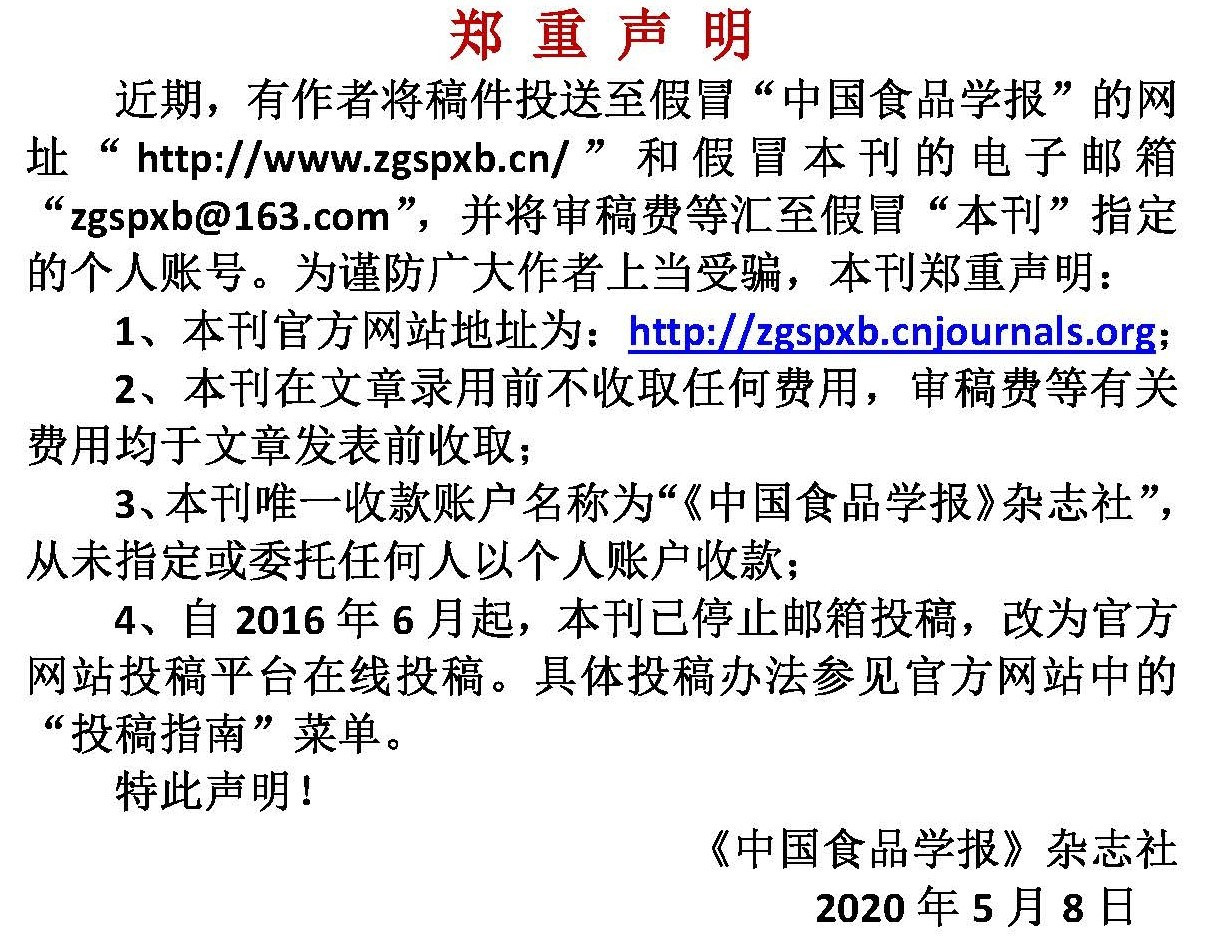大黄鱼优势腐败菌的致腐能力及对挥发性风味的影响
作者:
作者单位:
(1.浙江工商大学食品与生物工程学院 杭州 310018;2.浙江工商大学东海食品台州研究院 杭州 310018;3.深圳市市场监督管理局许可审查中心 广东深圳 518000;4.浙江兴旺水产集团有限公司 浙江台州 317000)
作者简介:
通讯作者:
中图分类号:
基金项目:
浙江省教育厅一般项目(Y201942135);浙江省自然科学基金项目(LQ21C200004)
The Spoilage Ability of Dominant Spoilage Bacteria in Large Yellow Croaker and Their Impact on Volatile Flavor
Author:
Affiliation:
(1.College of Food Science and Biotechnology, Zhejiang Gongshang University, Hangzhou 310018;2.Donghai Food Research Institute (Taizhou), Zhejiang Gongshang University, Hangzhou 310018;3.License Review Center of Shenzhen Municipal Administration for Market Regulation, Shenzhen 518000, Guangdong;4.Zhejiang Xingwang Aquatic Products Group Co., Ltd., Taizhou 317000, Zhejiang)
Fund Project:
引用本文
柴庭庭,朱星橦,柴保臣,陈军辉,陈跃文.大黄鱼优势腐败菌的致腐能力及对挥发性风味的影响[J].中国食品学报,2024,24(6):329-340
复制分享
文章指标
- 点击次数:
- 下载次数:
- HTML阅读次数:
历史
- 收稿日期:2023-09-15
- 最后修改日期:
- 录用日期:
- 在线发布日期: 2024-07-22
- 出版日期:
版权所有 :《中国食品学报》杂志社 京ICP备09084417号-4
地址 :北京市海淀区阜成路北三街8号9层 邮政编码 :100048
电话 :010-65223596 65265375 电子邮箱 :chinaspxb@vip.163.com
技术支持:北京勤云科技发展有限公司
地址 :北京市海淀区阜成路北三街8号9层 邮政编码 :100048
电话 :010-65223596 65265375 电子邮箱 :chinaspxb@vip.163.com
技术支持:北京勤云科技发展有限公司
